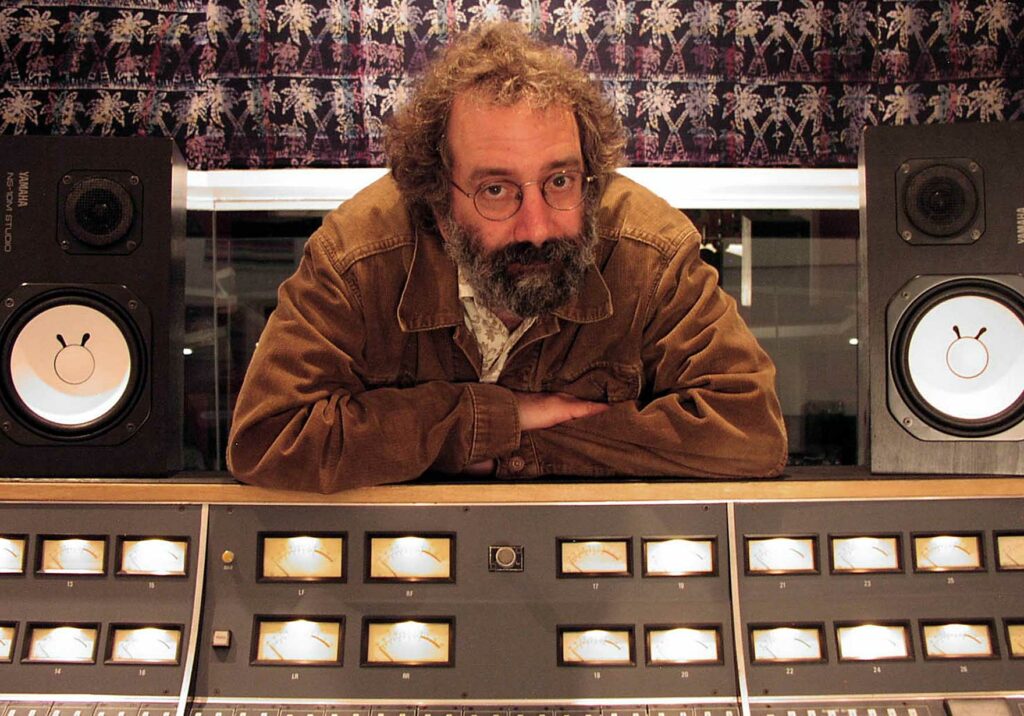Jersey City, New Jersey:
Andrew W.K., the unique solo artist who writes and records music that literally sounds like a party, is currently readying his third full-length release, arguably the most important effort of his career. Following 'I Get Wet' and 'The Wolf,' this yet-to-be-titled album is a crucial one for W.K. – an arena-rocking punk/jock hybrid vocalist singing atop a soundtrack, not unlike a classic '80s beer commercial.
For this artist, sounding bigger is sounding better. Knowing that the stakes are high this time around, W.K. and his co-producer, Don Fleming, enlisted the services of seasoned engineer/mixer John Agnello to help the duo complete what Agnello hears as a bigger, better, and more "stylized" Andrew W.K. release. "It's an interesting record," Agnello explains. "Don and Andrew were looking for a very stylized sound. It's a lot like a Queen production, even like a Jim Steinman/Meatloaf thing. There's a lot of stuff going on, but, frequency-wise, very 'narrow' sounding."
W.K. and engineer Ted Young had recorded a lot of the initial album tracks before bringing it to Fleming, who recorded more tracks. Finally, the project reached Agnello, who, working alongside W.K. and Fleming, added even more tracks. "The bottom line is that there are sometimes nearly 70 tracks on these songs," reveals Agnello. "With that many tracks, you can't hear everything all of the time. I had to have a blueprint of what should be heard where and how to EQ things differently, but I needed to keep it in the same narrow range that Andrew wanted to hear. I basically had to rethink most of the ways I regularly do things."
Working at Water Music Studios in New Jersey, Agnello manned the studio's Neve 8088 console, "one of the last 80 Series consoles ever made," he says. Agnello's personal rig, consisting of four API 512B microphone pre-amplifiers, four API 560B ten-band graphic equalizers, and two API 550b discrete four-band equalizers, found many uses during the recording and mixing of the ten songs Agnello completed for the project, most notably while tracking drums. "I bought them in 1988 and, since then, I can count on one hand the times I haven't run bass drum or snare drum through them. They've given me my drum sound forever. I usually double mic the bass and snare drums, so both sides have a 512B and 560B running to the console, multed to the same tracks."
For W.K.'s vocal tracks, Agnello crafted a sweet-sounding signal path using two of his favorite API components coupled with a classic microphone and classic limiter. "We got a sound that Andrew took to the B room," he explains. "Then while I mixed, they were overdubbing. It was my old Neumann U48 through my 512B, 550b, a Teletronix LA-2A, and right to the input of Pro Tools|HD using the output of the LA-2A for gain."
Other favorite outboard gear used by Agnello for the project included Daking microphone pre-amps on guitars and an API 3124 four-channel microphone pre-amplifier, which shined on tom tracks. "The 3124 is great because it has the mixer out," tells Agnello. "I can run my toms through it and comp them down to two tracks. I would also use them for overheads. On the record I'm doing right now for The Hold Steady I'm using it on a B3 and grand piano."
Agnello admits that mixing Andrew W.K. was challenging compared to most other mix projects, but ultimately challenging and fun. "We spent two days a song mixing and it was very intense," he offers. "But to me, that's not a bummer. Sometimes you just have to work harder. Andrew's record was very much a puzzle, a 3D picture. That made it a lot more work intensive."
To fit all the necessary acoustic information into each mix, creative fader rides and careful buss compression was a must. "For instance, I may push the acoustic guitar for the first four bars of the chorus, just so that would be a small feature," describes Agnello. "I also used buss compression. This was somewhat helpful, but I noticed that the more we compressed, the mushier it got because there was so much going on. I had to be careful. There was also a question about having 40 to 60 faders on the console being pushed. It got to points where we would hit the buss too hard, it would start to clip, and we'd pull back faders, which would change the compression. There were always sonic issues throughout the process that we had to address."
In the end, Agnello's engineering and mixing contributions to the project met the aural goals initially set by Fleming and W.K. However, Agnello willingly admits that it is difficult to balance the goal of a classic, stylized sound with the punchy modernity needed for an album's songs to sit alongside other new rock releases on the radio and elsewhere.
"That is a dichotomy of audio genres," Agnello explains honestly. "And Pro Tools isn't so forgiving about sonics. I find that when you have a lot of things recorded on digital, they all kind of blur together especially digital instruments minimizing sonic qualities. With analog, you can boost low-end on a bass drum, have it get larger, and not mess with the low-end of the guitar, bass guitar, or whatever. With Pro Tools, it's such a flat line of frequencies, resulting in more digital buildup than you would get from analog. To compensate, we have to put everything through API equalizers and compressors, discrete consoles, and tube limiters. You have to try to get things extra-warm if you're going to mix outside of the analog recording world."
